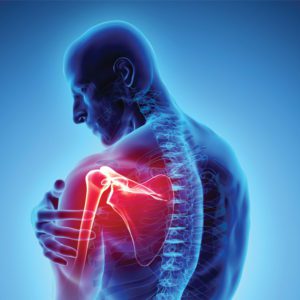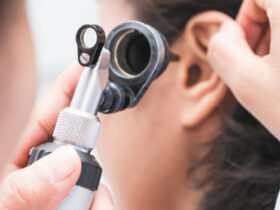By Luga Podesta, MD
 The Gulf of Mexico with all of its backwaters, rivers and tributaries are literally out our back doors. It is no wonder that Southwest Florida is a fisherman’s paradise. Although we don’t often equate fishing with orthopedic or musculoskeletal injuries, these injuries occur much more often then we realize and are frequently overlooked.
The Gulf of Mexico with all of its backwaters, rivers and tributaries are literally out our back doors. It is no wonder that Southwest Florida is a fisherman’s paradise. Although we don’t often equate fishing with orthopedic or musculoskeletal injuries, these injuries occur much more often then we realize and are frequently overlooked.
Fishing is a very demanding and dynamic activity requiring a tremendous amount of muscle conditioning, endurance, strength and coordination. Fishing requires our bodies to repetitively move for example casting a line or reeling in line or a fish. Fishing also requires that we apply sustained muscle force or contractions to pull on a fishing pole to land a fish. Over time, these repetitive activities and stresses on various muscles, joints, tendons and ligaments can lead to fatigue and ultimately injury. These injuries can be significant and debilitating, forcing us take time off the water.
Many of these injuries are not unique to fisherman and can occur in other sports such as golf, tennis, pickle ball, running or any other sport that we repetitively use our muscles and joints. In this short article I would like to familiarize you with several of the more common overuse or repetitive injuries that can occur in the low back and upper extremities with fishing and how they can be treated non-surgically to get you back to the recreational activities that we all enjoy here in Southwest Florida.
Back pain is second only to the common cold as the most common reason for seeing a physician. Low back pain is a very common problem experienced by most individuals with 70 to 80% of the world’s population experiencing low back pain sometime during their lives. Younger individuals in their mid 30’s are at greatest risk for intervertebral disc herniations.
The intervertebral discs are small, circular cushions between the vertebral bones. The discs function as shock absorbers and cushions. Lumbar discs are made up of a gelatinous inner center or nucleous surrounded by a thick casing or annulus. The discs help to separate two vertebral bones while maintaining the spacing for the exiting spinal nerves.
Discs are damaged when the outer casing or annulus allows the inner nucleus to escape thought the outer layer. The disc can be damaged by a sudden strenuous action such as lifting a heavy object or twisting. The discs can also be damaged by a fall or accident, repeated straining of your back or most commonly by simply bending over and twisting. When the disc is injured it typically is injured for life and leads to disc degeneration and arthritis.
The pain associated with disc and other low back injuries can range from localized pain in the low pack to pain radiating into the buttocks or legs.
Disc and other low back injuries can be diagnosed after a thorough history, physical examination and imaging studies such as an MRI or CT scan have been performed.
The treatment for lumbar or low back pain will depend on the specific injury, severity and the associated symptoms. Conservative treatment may include relative rest, application of ice packs, physical therapy, core-strengthening exercises, oral medications such as anti-inflammatories, pain medication, muscle relaxants, and spinal. The vast majority of disc injuries and low back pain can be affectively treated non-surgically.The key to treating low back pain is to prevent them from happening in the first place.
The shoulder is another area of the body that is susceptible to repetitive or overuse injuries especially those in the rotator cuff. The causes of shoulder pain in fisherman can vary. The most common causes however are due to repetitive overhead activity such as casting, reaching above head or pushing, pulling or throwing activities such as throwing net.
The shoulder is made up of four bones that are supported by various ligaments and the rotator cuff muscles. The shoulder in the most mobile of all joints permitting almost complete range of motion.
With repetitive overhead reaching the soft tissues supporting the shoulder (muscle tendons) can get compressed or impinged between the bones leading to inflammation, partial or complete tearing and associated pain.
Pain is experienced with elevation of the arm and shoulder. Pain may also be experienced down the arm to the elbow and hand. It is also very common to experience pain sleeping on the shoulder or being awaken at night by shoulder pain. If pain persists longer than a week medical advice by an orthopaedic physician is recommended.
If shoulder pain develops the first line of treatment should include relative rest by limiting overhead activity of the affected arm. Application of iced for 15 to 20 minutes every 2-3 hours can be beneficial. Anti-inflammatory medications can also be effective in reducing the initial inflammation and pain. If pain persists, other natural, non-surgical therapies including regenerative cell based therapies with platelet-rich plasm (PRP) and or your own stem cells can be utilized to restore normal anatomy. A shoulder exercise program emphasizing scapular stabilizer muscle and rotator muscle strengthening should be initiated once the majority of the pain has subsided or the tendon anatomy, integrity and function have been restored. This is very helpful to prevent further occurrences of pain from developing.
Properly warming up and stretching prior to activity and cooling down can help to prevent shoulder injuries. Maintaining shoulder flexibility and strength is also important in preventing injuries from developing.
While the rate of traumatic injuries sustained by fisherman are low, greater numbers of fisherman are developing significant elbow injuries.
Tennis elbow (Lateral epicondylitis) and Golfer’s elbow (Medial epicondylitis) are conditions that causes pain at the outside (lateral) or inside (medial) side of the elbow, where the tendons of the forearm muscles attach to the bone prominences. Pain develops at the outside or inside of the elbow and may spread into the forearm and wrist. Lifting, gripping and wrist extension with the palm facing down are more painful with tennis elbow. Pain is greatest with bending the wrist and fingers with the palm facing up.
These injuries are not limited to golfers, tennis players or fisherman. Anyone that repetitively uses their wrists or clenches their fingers can develop elbow injuries. Injuries can also arise from a single forceful muscle contraction such as when a large fish initially hits you bait, and we forcefully set the hook.
The onset of symptoms is often gradual, and symptoms may persist for weeks before patients seek medical care. Most patients wait too long to seek treatment often thinking the injury will heal and symptoms will resolve on their own. Unfortunately, in the majority of cases the symptoms worsen limiting elbow, wrist and hand function.
Diagnosis is made by clinical examination and is confirmed by imaging studies including diagnostic musculoskeletal ultrasound or MRI scans.
Treatment can be difficult for chronic or severe cases. Stopping the etiological mechanisms causing the injury such as repetitive wrist movements and gripping is necessary. Early treatment often includes physical therapy (stretching of the wrist flexor muscles, physical modalities such as ice, electric stimulation and therapeutic exercise). The use of oral medication such as anti-inflammatory medications are of little use since this is not typically an inflammatory injury. The use of corticosteroid injections has fallen out of favor being replaced by newer more natural regenerative treatments allowing the body to essentially heal itself. As in other tendons, treatments such as platelet rich plasma (PRP) have been shown to be extremely beneficial.
If you or a loved one have been experiencing low back pain, shoulder pain, elbow pain or any other musculoskeletal condition preventing you form enjoying sports, recreation or life in general, call Dr. Luga Podesta at Bluetail Medical Group-Naples, 239-631-1960 to find out how he can help you return back to the activities you enjoy.
239-631-1960
BluetailMedicalGroup.com










